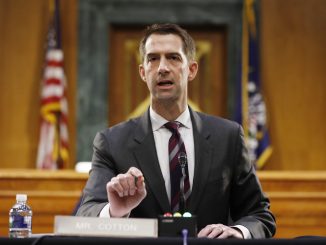
It says a lot about the base readership and the paper itself that a New York Times piece, which was mildly critical of a Democratic candidate for public office, caused widespread eruptions from the left.
The outrage even extended to staff members to the point that a senior editor felt the need to explain their rationale behind the article’s publication.
It all started on July 3 when the Times published a piece on Zohran Mamdani, the Democratic nominee in the New York City mayoral race.
The New York assemblyman and proud Democratic Socialists of America member was fresh off of officially being declared the winner in the primary when the paper revealed in a headline that “Mamdani Identified as Asian and African American on College Application” back in 2009.
The college in question was Columbia University, which has become a hotbed for antisemitism and pro-Hamas sentiment in recent years, especially after the Oct. 7, 2023, Hamas terrorist attacks against Israeli civilians. His father, Mahmood Mamdani, was and is a professor there.
In the piece, the paper noted why this revelation was important.
“Columbia, like many elite universities, used a race-conscious affirmative action admissions program at the time,” the Times wrote. “Reporting that his race was Black or African American in addition to Asian could have given an advantage to Mr. Mamdani, who was born in Uganda and spent his earliest years there.”
They reached out directly to Mamdani, who confirmed the story and provided this explanation: “Most college applications don’t have a box for Indian-Ugandans, so I checked multiple boxes trying to capture the fullness of my background.”
The information came from a cyberattack on Columbia’s database, one that Mamdani was not the intended target of, according to the Times.
Nevertheless, the sourcing of the story, which was said to be an anonymous academic figure who opposes affirmative action, combined with the fact that it was mildly critical of Mamdani himself, caused leftists on the liberal social media haven BlueSky to melt down, with some staffers even blasting off.
“Everything I have seen about him screams a guy with little to no actual brain activity,” Woke NYT columnist Jamelle Bouie wrote on BlueSky, referring to one of the reporters on the story, Benjamin Ryan.
“No surprise that one of the biggest duma–es in journalism is involved in this,” Bouie also wrote before deleting his posts and explaining that they went against the Times’ “social media standards.”
NY Times assistant managing editor Patrick Healy responded to the uproar by pointing out on X that they were able to verify the information they shared before publication by taking it to Mamdani, who confirmed its validity.
“We sometimes receive information that has been hacked or from controversial sources,” Healy tweeted. “The Times does not solely rely on nor make a decision to publish information from such a source; we seek to confirm through direct sources, which we did with Mr. Mamdani.”
The Times has had a problematic history in dealing with leftist backlash, with one infamous example being the resignation of a top editor over an op-ed piece written by Sen. Tom Cotton (R-Ark.) amid the George Floyd riots of 2020.
Healy’s explainer on the Mamdani piece isn’t likely to quell the outrage mobs. But hopefully the paper will break from its troublesome tradition of bending the knee in the face of criticism and won’t allow its rabidly partisan critics on the left to influence its future acts of journalism involving critical reporting on Mamdani or any other Democratic public figure.
North Carolina native Stacey Matthews has also written under the pseudonym Sister Toldjah and is a media analyst and regular contributor to RedState and Legal Insurrection.



